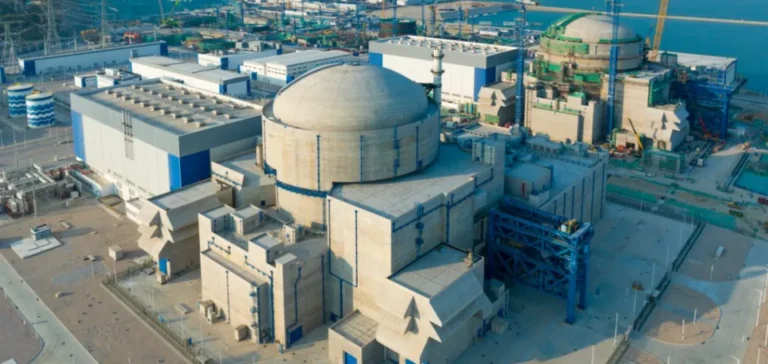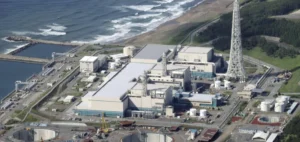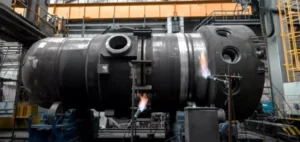The Zhaoyuan site in Shandong province has begun construction of its first Hualong One unit, marking the project’s formal integration into China’s nuclear fleet. The programme plans six third-generation reactors, with a total installed capacity of 7.2 GWe. This initiative is part of the national nuclear roadmap aiming for 200 GWe by 2035, up from about 61 GWe currently. The project’s inland location requires stricter regulatory oversight, especially regarding water resource management.
Centralised regulatory framework and public actors
The project is overseen by the State Council of China, with environmental assessment by the Ministry of Ecology and Environment (MEE) and technical validation by the National Nuclear Safety Administration (NNSA). This regulatory framework fully integrates Zhaoyuan into national standards. Execution is handled by Shandong Zhaoyuan Nuclear Power Company, a subsidiary of China General Nuclear Power Corporation (CGN), while CGN Power Co. Ltd consolidates financial performance.
Response to US restrictions on technology transfers
The launch of the Zhaoyuan project follows the inclusion of CGN on both the US CMIC list (Chinese Military-Industrial Companies) and the Entity List maintained by the Bureau of Industry and Security. These designations prohibit certain foreign investments and restrict access to sensitive technologies. In response, Chinese authorities have strengthened regulations on technological autonomy by accelerating the replacement of foreign components with certified domestic equipment. Zhaoyuan is thus designed as a demonstrator compliant with internal regulatory standards, limiting exposure to external norms.
Deployment of air-cooled technology compliant with environmental standards
The use of a 203-metre natural draft cooling tower allows Zhaoyuan to avoid marine cooling, still prevalent in most Chinese nuclear plants. This configuration imposes specific regulatory requirements on atmospheric emissions and water consumption, in line with current environmental policies. The system, subject to mandatory post-commissioning monitoring, acts as a regulatory test case for developing nuclear sites away from the coast in water-constrained areas.
Regulatory impact on supply chains and the fuel cycle
With six planned units, the project increases demand for uranium and enrichment services, prompting Chinese regulators to adjust mechanisms for allocating strategic resources. Regulatory frameworks for long-term fuel procurement contracts are being strengthened, with a focus on non-Western suppliers. Simultaneously, safety standards impose tighter requirements on domestic suppliers, who must certify their equipment under national nuclear safety regulations.
Financial regulation and grid integration
Zhaoyuan’s economic model relies on government-regulated tariffs, with State Grid Corporation of China (SGCC) as the main off-taker. The purchase price regulation is aligned with goals of stabilising wholesale prices and ensuring smooth integration into an energy mix dominated by intermittent renewables. Regulations governing grid connection require SGCC to anticipate injected volumes and adapt the UHV infrastructure accordingly, necessitating regulatory adjustments for delivery schedules and related storage capacities.
Regulatory consequences for foreign stakeholders
US-imposed sanctions make any foreign involvement in the project legally sensitive. European firms are currently outside the scope of these restrictions, but growing pressure for transatlantic regulatory alignment could narrow their options. Zhaoyuan therefore acts as a full-scale regulatory test for assessing China’s ability to shield sensitive projects from extraterritorial standards while adhering to its own compliance frameworks.
CGN’s positioning in the regulated nuclear landscape
Zhaoyuan becomes CGN’s tenth domestic nuclear site, with regulatory oversight enhancing its legitimacy in the domestic market. The project is part of a national strategy for industrial standardisation, consolidating the certification process of the Hualong One design. This uniformity helps rationalise regulatory audits, simplify approval procedures and facilitate international export of the model to countries with compatible or aligned regulations.






















